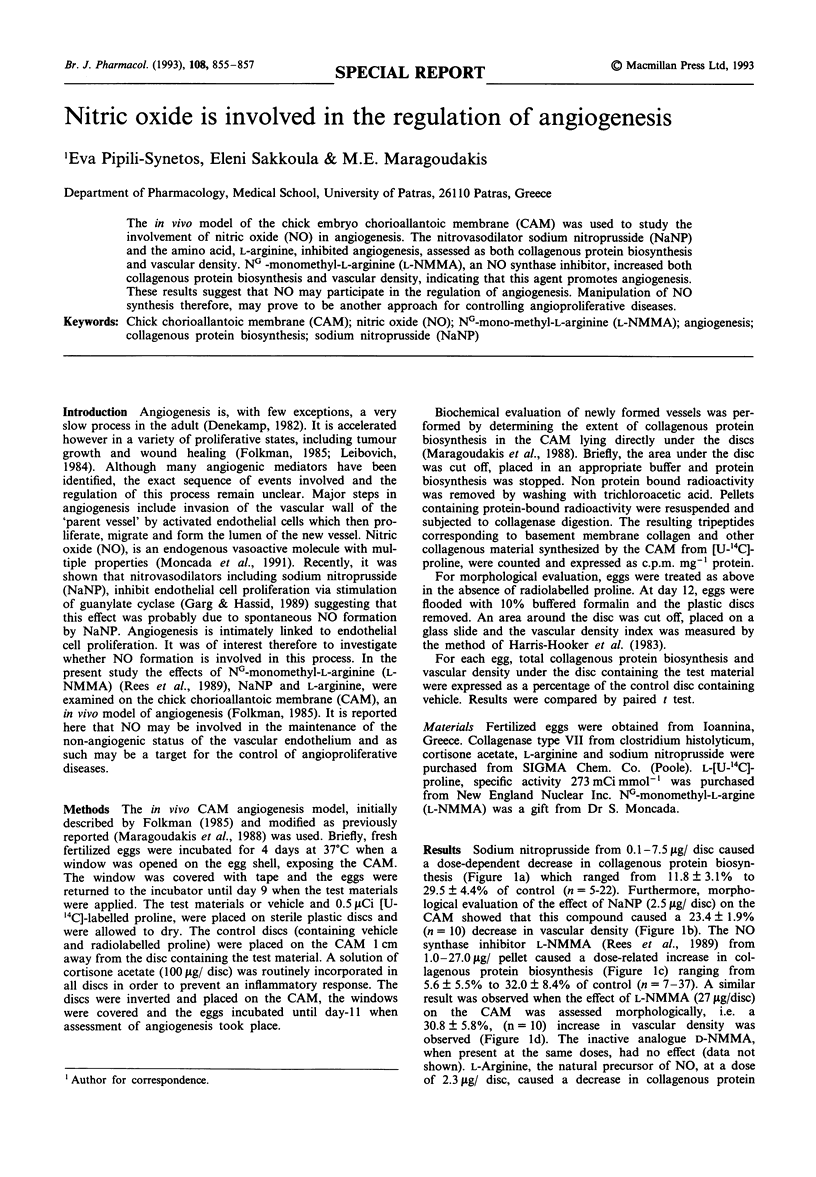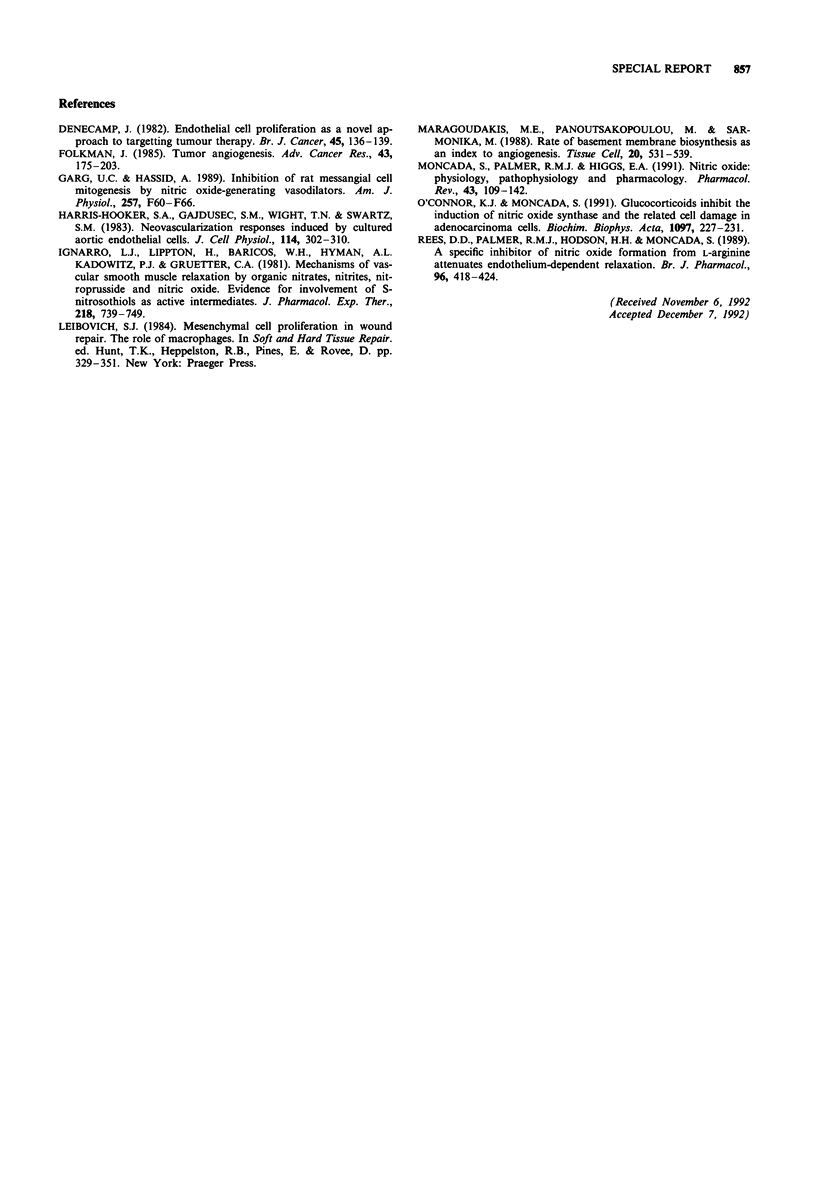Abstract
The in vivo model of the chick embryo chorioallantoic membrane (CAM) was used to study the involvement of nitric oxide (NO) in angiogenesis. The nitrovasodilator sodium nitroprusside (NaNP) and the amino acid, L-arginine, inhibited angiogenesis, assessed as both collagenous protein biosynthesis and vascular density. NG-monomethyl-L-arginine (L-NMMA), an NO synthase inhibitor, increased both collagenous protein biosynthesis and vascular density, indicating that this agent promotes angiogenesis. These results suggest that NO may participate in the regulation of angiogenesis. Manipulation of NO synthesis therefore, may prove to be another approach for controlling angioproliferative diseases.
Full text
PDF


Selected References
These references are in PubMed. This may not be the complete list of references from this article.
- Denekamp J. Endothelial cell proliferation as a novel approach to targeting tumour therapy. Br J Cancer. 1982 Jan;45(1):136–139. doi: 10.1038/bjc.1982.16. [DOI] [PMC free article] [PubMed] [Google Scholar]
- Folkman J. Tumor angiogenesis. Adv Cancer Res. 1985;43:175–203. doi: 10.1016/s0065-230x(08)60946-x. [DOI] [PubMed] [Google Scholar]
- Garg U. C., Hassid A. Inhibition of rat mesangial cell mitogenesis by nitric oxide-generating vasodilators. Am J Physiol. 1989 Jul;257(1 Pt 2):F60–F66. doi: 10.1152/ajprenal.1989.257.1.F60. [DOI] [PubMed] [Google Scholar]
- Harris-Hooker S. A., Gajdusek C. M., Wight T. N., Schwartz S. M. Neovascular responses induced by cultured aortic endothelial cells. J Cell Physiol. 1983 Mar;114(3):302–310. doi: 10.1002/jcp.1041140308. [DOI] [PubMed] [Google Scholar]
- Ignarro L. J., Lippton H., Edwards J. C., Baricos W. H., Hyman A. L., Kadowitz P. J., Gruetter C. A. Mechanism of vascular smooth muscle relaxation by organic nitrates, nitrites, nitroprusside and nitric oxide: evidence for the involvement of S-nitrosothiols as active intermediates. J Pharmacol Exp Ther. 1981 Sep;218(3):739–749. [PubMed] [Google Scholar]
- Maragoudakis M. E., Panoutsacopoulou M., Sarmonika M. Rate of basement membrane biosynthesis as an index to angiogenesis. Tissue Cell. 1988;20(4):531–539. doi: 10.1016/0040-8166(88)90055-9. [DOI] [PubMed] [Google Scholar]
- Moncada S., Palmer R. M., Higgs E. A. Nitric oxide: physiology, pathophysiology, and pharmacology. Pharmacol Rev. 1991 Jun;43(2):109–142. [PubMed] [Google Scholar]
- O'Connor K. J., Moncada S. Glucocorticoids inhibit the induction of nitric oxide synthase and the related cell damage in adenocarcinoma cells. Biochim Biophys Acta. 1991 Oct 21;1097(3):227–231. doi: 10.1016/0925-4439(91)90040-g. [DOI] [PubMed] [Google Scholar]
- Rees D. D., Palmer R. M., Hodson H. F., Moncada S. A specific inhibitor of nitric oxide formation from L-arginine attenuates endothelium-dependent relaxation. Br J Pharmacol. 1989 Feb;96(2):418–424. doi: 10.1111/j.1476-5381.1989.tb11833.x. [DOI] [PMC free article] [PubMed] [Google Scholar]


